Following an injury to the proximal interphalangeal joint, there is often a loss of range of motion, typically in both the flexion and extension planes. Therefore, we have compiled a list of helpful splinting options for stiff finger joints.
To Improve PIP Joint Flexion
Flexion Wrap with Elastic Tape (Coban):
This is a very easy and simple way to improve pip joint flexion. One should use caution not to apply the tape too tightly as it can easily cause ischemia. Always ensure the patient has adequate sensation, and Coban should never be utilized after a nerve block. It is typically advised to keep the tape in place for no more than 20 minutes. This can be repeated several times throughout the day. The tape can be applied to the PIP joint by wrapping around the hand and digit or wrapped around just the PIP and DIP joint.

Flexion Wrap with Elastic Strap and Safety Pin:
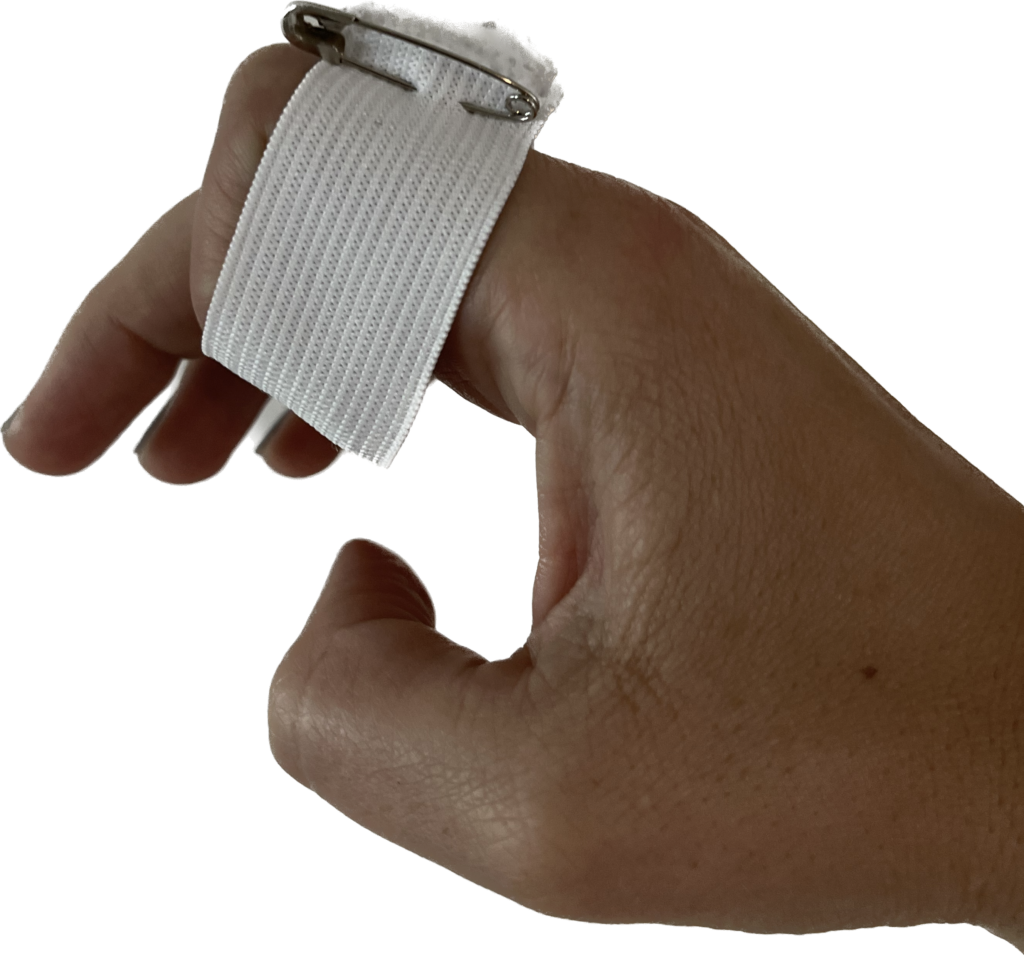
Elastic strapping material or the elastic material used in waste bands can be utilized with a safety pin to improve pip and dip joint flexion. As the pip joint flexion improves, the elastic band can be tightened with the safety pin. The wearing schedule is for 20 minutes, 2-3x per day. This is a simple option for stiff finger joints.
Static Progressive Splinting:
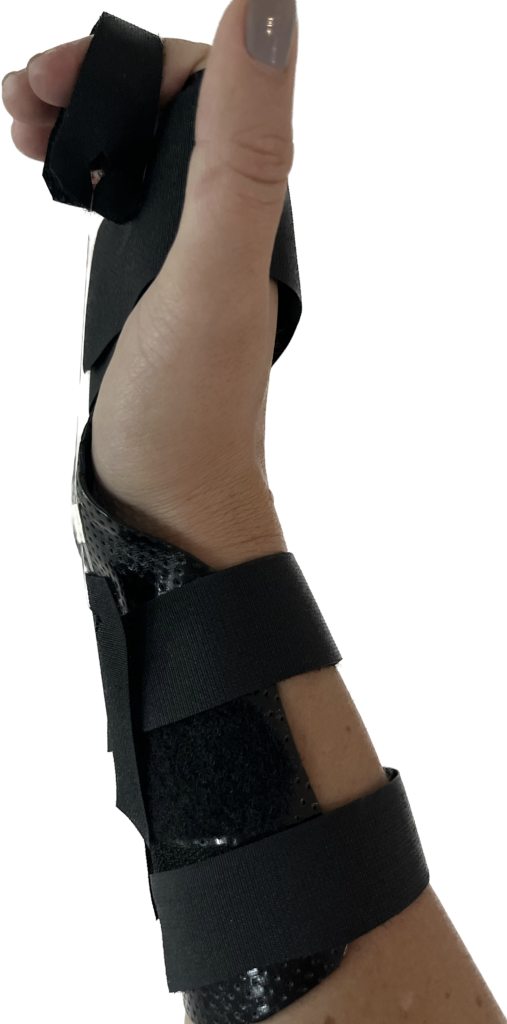
A custom hand-based or wrist-based orthosis can be used while blocking the MCP joint(s) in extension. This will help load the PIP joint. A simple finger loop can be fabricated out of the strapping material. A monofilament line can be used to lace through the finger loop and then attached to non-adhesive hook velcro. A piece of loop hook velcro can be applied to the splint this will serve as the attachment site for the hook Velcro. The wearing schedule is typically for 20-30 minutes 3x/day.
Relative Motion Splinting:
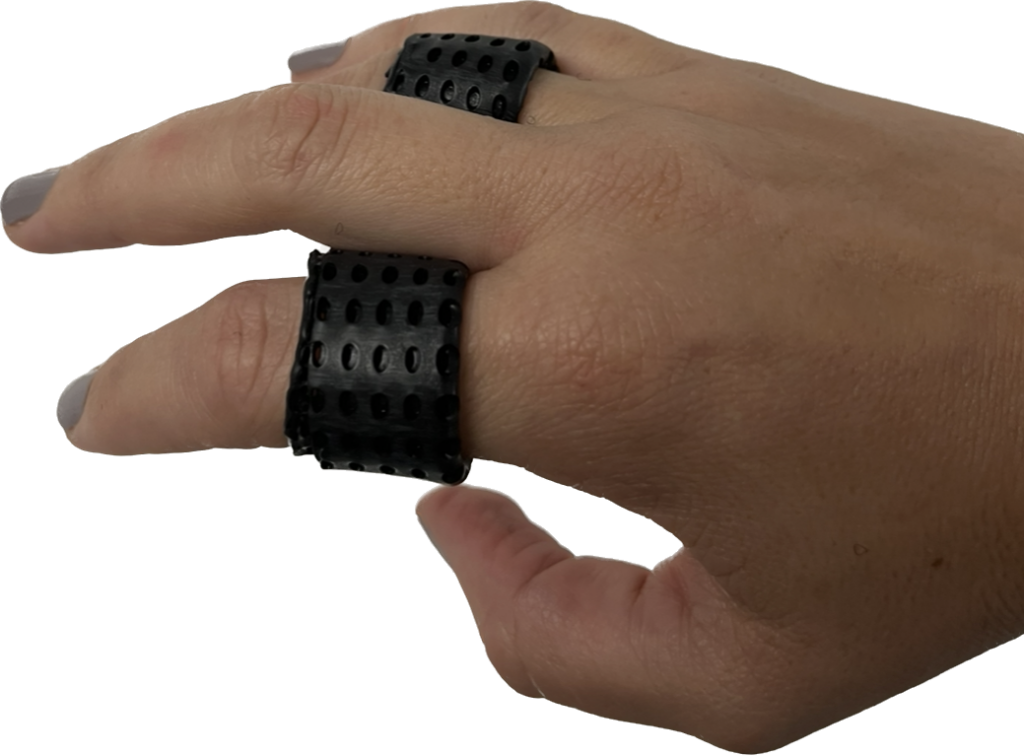
A relative motion splint can be used for improving PIP joint flexion. This is done by placing the involved finger in relative extension compared to the other joints. The wearing schedule for a relative motion orthosis is typically for the entire day and night.
To Improve PIP Joint Extension
Static Night-Time Extension Splint:
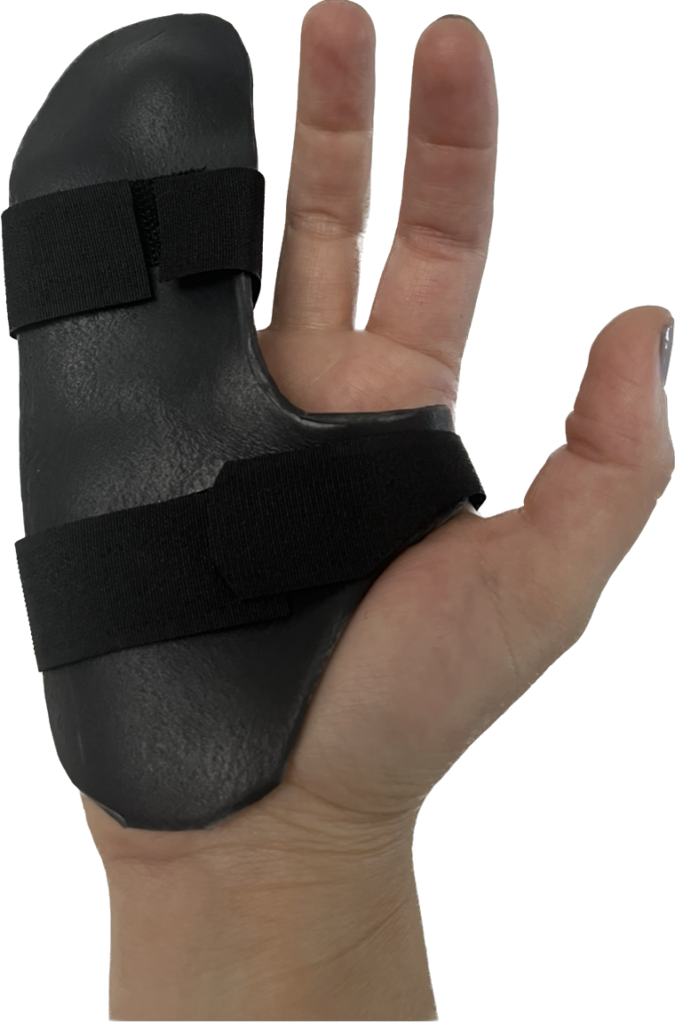
A volar static splint can be fabricated for the patient to sleep in at night. This allows a low load force to a stiff joint. It can be heated up and re-adjusted to provide an improved stretch as the patient’s range of motion improves.
Joint Jack:
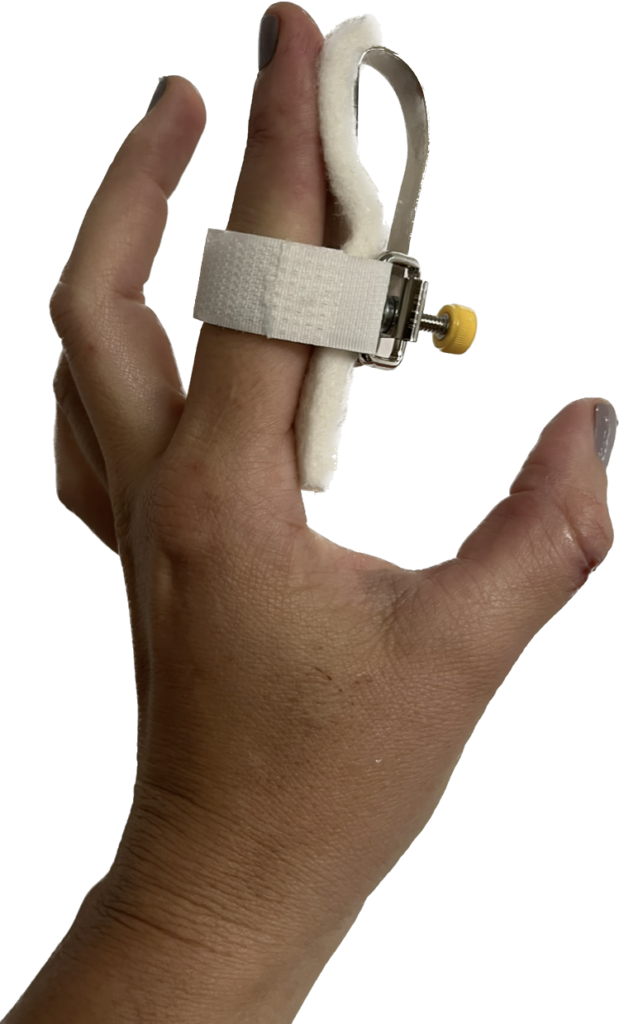
The Joint Jack Finger Splint puts pressure on the finger to prevent movement and apply an extension stretch to the pip joint. If can be adjusted by turning the screw. It is typically not indicated if the PIP joint contracture is greater than 25 degrees. The wearing schedule for daytime is typically for 20-30 minutes, 2-3x per day or can be worn at night while sleeping. If worn at night, a piece of tape can be used to secure the splint in place.
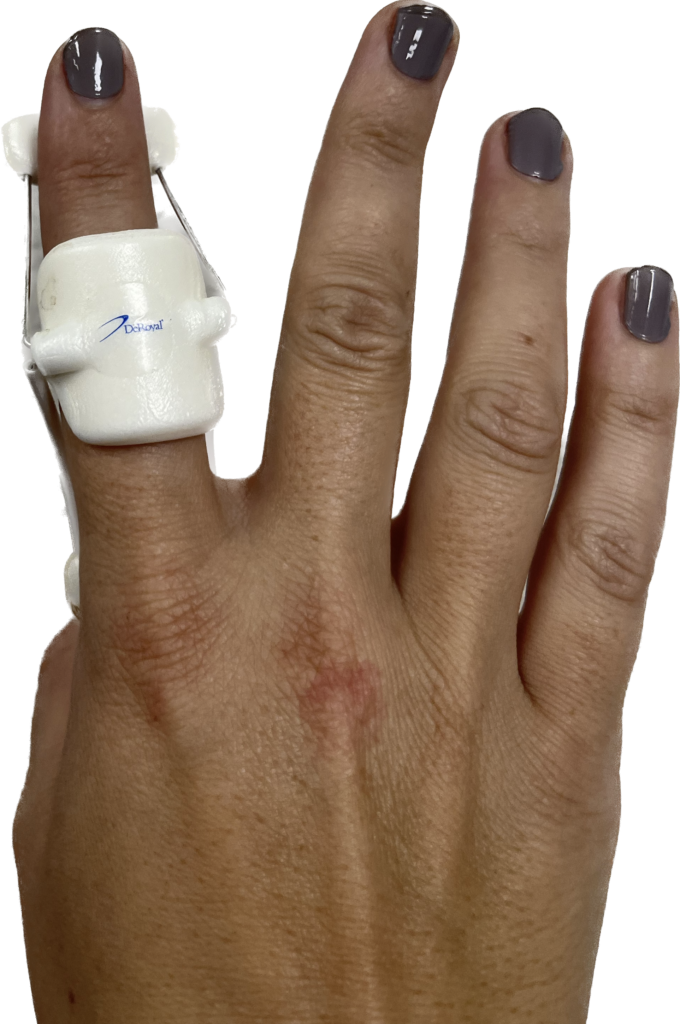
LMB:
An LMB splint applied to the PIP joint relies on the principle of three-point fixation to improve extension. The splint can be adjusted to increase the extension force by spreading the volar pads apart before placing it on the finger. To decrease the tension, pinch the volar pads together before placing on the finger. The wearing schedule is for 20-30 minutes 2-3x/a day.
Digital Serial Casting:
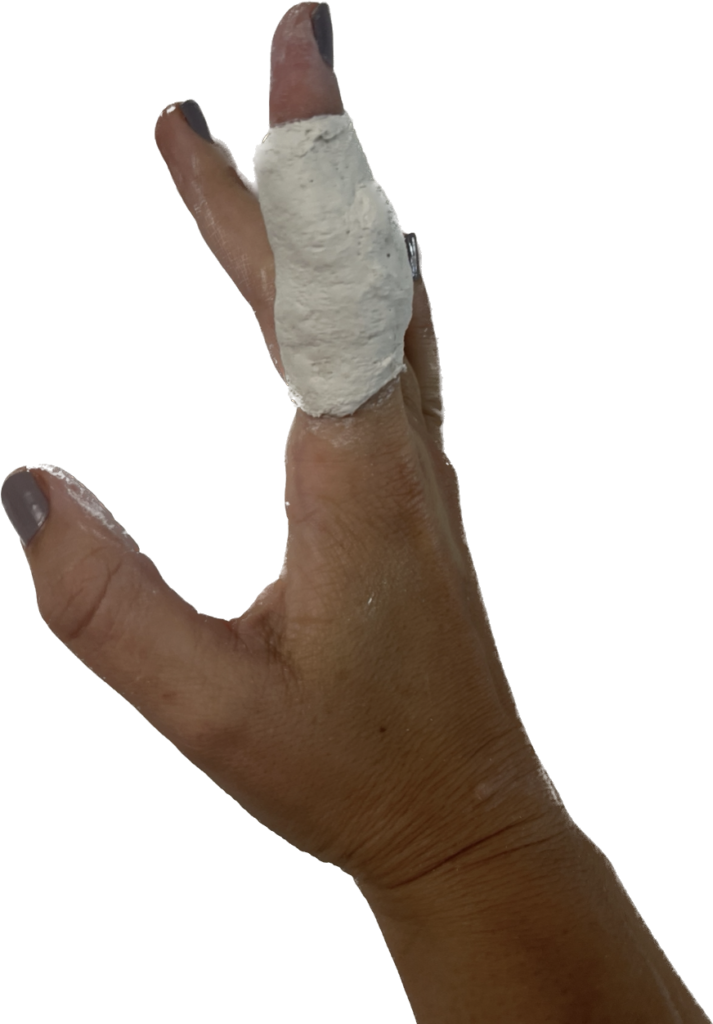
Digital Serial casting is one of the more effective methods for treating PIP flexion contractures. It not only helps improve PIP joint extension, but it can also help to resolve edema and joint inflammation. Non-removable serial casts can be worn for up to seven days. Serial casts can also be made removable by applying a lotion or paraffin wax layer before cast application. This is one of our favorite options for stiff finger joints.
Relative Motion Splinting:
A relative motion splint can be used for improving PIP joint extension. This is done by placing the involved finger in relative flexion compared to the other joints. The wearing schedule for a relative motion orthosis is typically for the entire day and night.
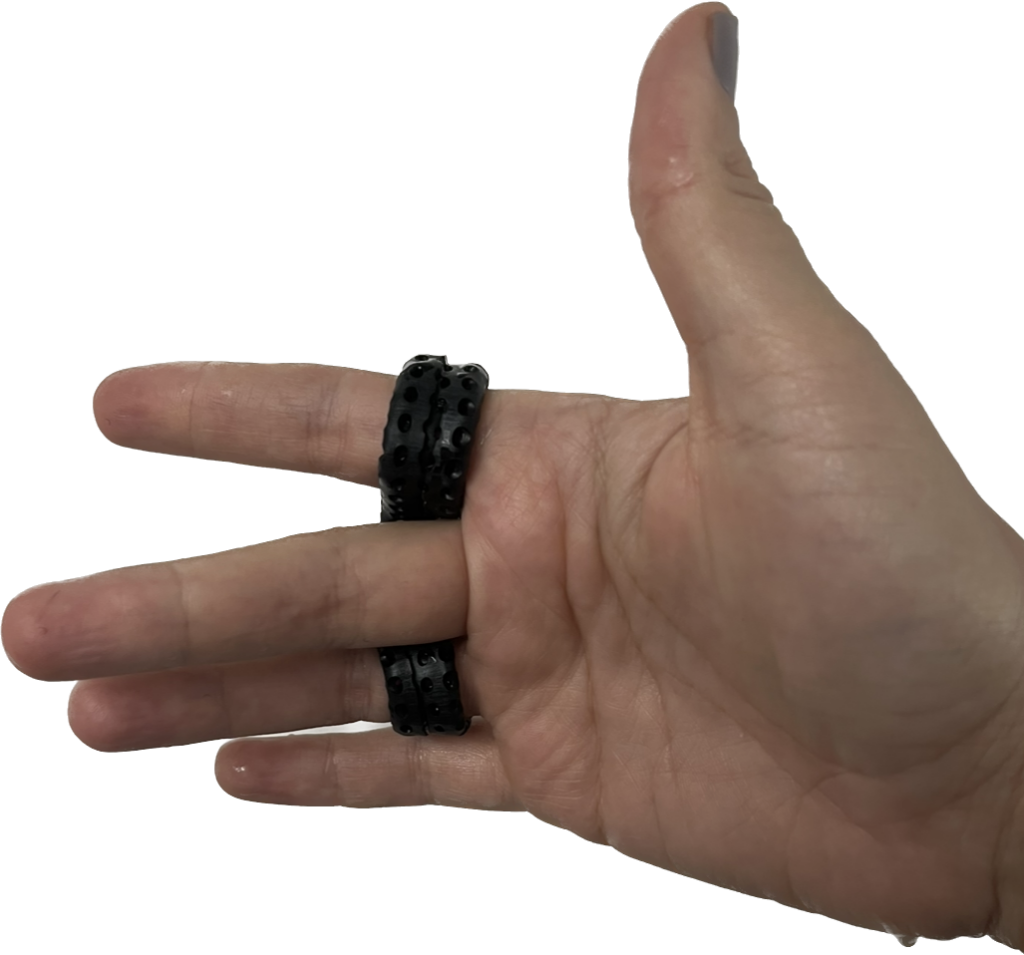
3 Comments
Leave a Comment
More To Read
Sensitivity and Specificity in Thoracic Outlet Syndrome (TOS) Tests in Hand Therapy
By: Mikayla Murphy Sensitivity and Specificity in Thoracic Outlet Syndrome (TOS) Tests in Hand Therapy Thoracic outlet syndrome (TOS) describes the compression of nerves, arteries, and veins as they pass through the thoracic outlet. Compression can occur at the interscalene triangle, the costoclavicular triangle, and the subcoracoid space (Physiopedia, n.d.). There are three types of…
Read MoreAssessing and Improving Grip with the Squegg
Assessing and Improving Grip with the Squegg By: Megan Prather “Grip training is made fun” In hand therapy we are always looking for engaging new interventions to use with patients. The Squegg is a dynamic grip-training tool that can be used with clients both to assess grip strength and to improve strength across sessions. This…
Read More5+ Common Mallet Finger Splints
Finger orthoses can be tough, and the mallet orthosis is no exception in hand therapy. The protocol for 15 degrees of DIP extension with mallet fingers is tricky to manage while making a common mallet finger splint. Small splints on little fingers are also tricky to get sized just right and with strapping in the…
Read MoreSign-up to Get Updates Straight to Your Inbox!
Sign up with us and we will send you regular blog posts on everything hand therapy, notices every time we upload new videos and tutorials, along with handout, protocols, and other useful information.



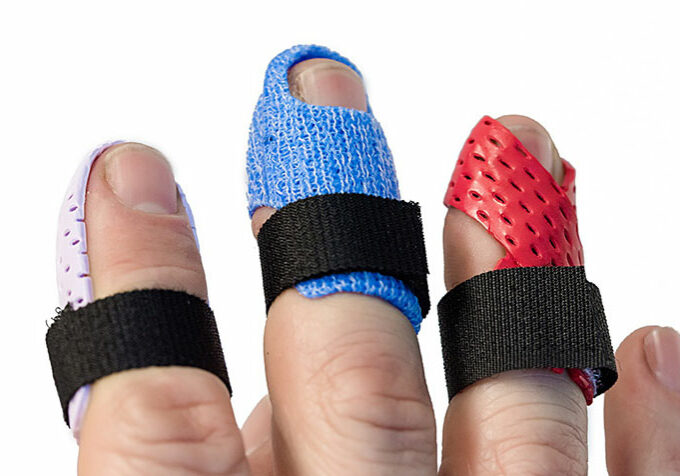

Hi is am a practicing PT in a rural setting and I occasionally get hand patients in the clinic. I was wondering if you are aware of a dynamic splint for the thumb IP joint to improve flexion?
Thank you for breaking down the splinting process so clearly. It’s reassuring to know that with the right techniques, we can promote healing and prevent further injury. Your expertise shines through in every paragraph!
Thank you that is very kind!